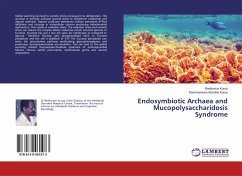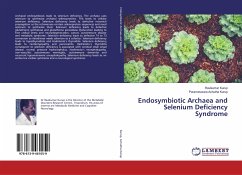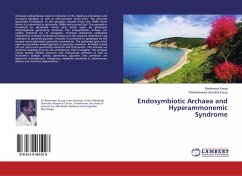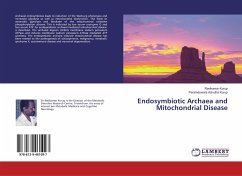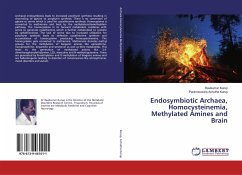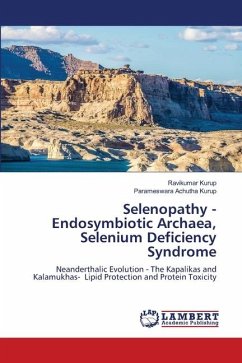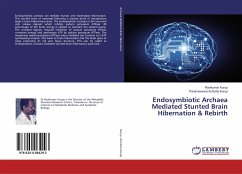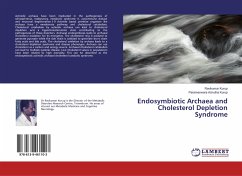
Endosymbiotic Archaea and Cholesterol Depletion Syndrome
Versandkostenfrei!
Versandfertig in 6-10 Tagen
36,99 €
inkl. MwSt.

PAYBACK Punkte
18 °P sammeln!
Actinidic archaea have been implicated in the pathogenesis of schizophrenia, malignancy, metabolic syndrome X, autoimmune disease and neuronal degeneration.1-9 Actinide based primitive organism like archaea have a mevalonate pathway and cholesterol catabolism. Cholesterol catabolism by actinidic archaea can lead to cholesterol depletion and a hypocholesterolemic state contributing to the pathogenesis of these disorders. Archaeal endosymbiosis leads to archaeal cholesterol oxidation for its energetics. The cholesterol ring is oxidized to generate pyruvate while the side chain is oxidized to gen...
Actinidic archaea have been implicated in the pathogenesis of schizophrenia, malignancy, metabolic syndrome X, autoimmune disease and neuronal degeneration.1-9 Actinide based primitive organism like archaea have a mevalonate pathway and cholesterol catabolism. Cholesterol catabolism by actinidic archaea can lead to cholesterol depletion and a hypocholesterolemic state contributing to the pathogenesis of these disorders. Archaeal endosymbiosis leads to archaeal cholesterol oxidation for its energetics. The cholesterol ring is oxidized to generate pyruvate while the side chain is oxidized to generate short chain fatty acids and bile acids. The cholesterol oxidation by archaea leads to a cholesterol depletion syndrome and disease phenotype. Archaea can use cholesterol as a carbon and energy source. Archaeal cholesterol catabolism can lead to multiple systemic disease. Low cholesterol values in populations have been related to high mortality. This can be described as the endosymbiotic actinidic archaeal cholesterol catabolic syndrome.



